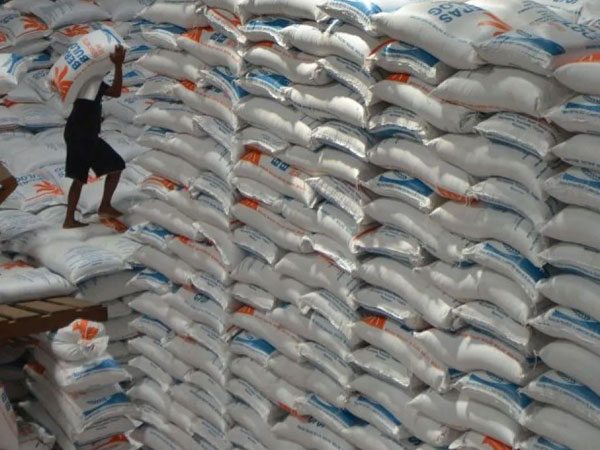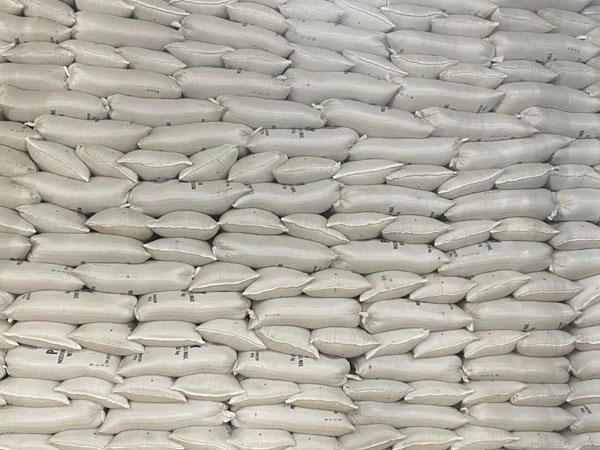 A rapid change in the price of rice, whether going up or going down, is a hot button issue in the Philippines that elicits strong emotional reactions and heated discussions about how to address it. This speaks to the crop’s enduring importance as a food item and in its production as a source of employment in the country.
A rapid change in the price of rice, whether going up or going down, is a hot button issue in the Philippines that elicits strong emotional reactions and heated discussions about how to address it. This speaks to the crop’s enduring importance as a food item and in its production as a source of employment in the country.
Why rapid rice price increases is a concern?
Rice is the staple food for Filipinos. According to the Food and Nutrition Research Institute (FNRI) and the Philippine Statistics Authority (PSA), it is the food item that contributes the most to the attainment of Filipino daily calorie or energy requirements of about 2,000 calories.
In the food bundles constructed by FNRI that are used to compute food poverty thresholds, rice is assumed to be part of breakfast (with scrambled egg and coffee with milk), lunch (with boiled/ginataang monggo with malunggay and dilis, and banana), and dinner (with fried fish/boiled pork and a vegetable dish).
Based on the PSA’s 2021 Family Income and Expenditures Survey, the mean annual household expenditure on rice in the country was at P17,582 in 2021. [This would be an underestimate of the total because it does not include rice that was consumed as part of “food consumed outside the house,” such as those eaten in restaurants.]
Rice consumption varies significantly across income groups. If Philippine households were divided into per capita income deciles (ranked from lowest to highest per capita income and then divided into 10 equally sized groups), those in the lowest decile will have the highest expenditure on rice and those in the highest decile will have the lowest expenditure on rice.
Households in the poorest per capita income decile spent P19,954 on rice in 2021, on average, while those in the highest income decile spent P15,040. The type of rice consumed differed as well. For the country as a whole, 65 percent of rice expenditure was on regular-milled rice and 34 percent was on well-milled rice and special rice, with the remaining on other types of rice (NFA, glutinous, etc.).
For the poorest decile, regular-milled rice accounted for the bulk of total rice expenditure (74 percent) while well-milled rice and special rice accounted for only 22 percent. For the richest decile, regular-milled rice accounted for only 45 percent and well-milled rice and special rice had a 53 percent share.
The share of total household income spent on rice was 6 percent for the entire country but was at a much higher 17 percent for those in the poorest income decile and only 2 percent for those in the richest income decile.
As of the latest poverty statistics from the PSA (2023), 3.9 percent of households and 5.9 percent of the population were still food poor (or had per capita income below the food poverty threshold). Rapid increases in rice prices that are unaccompanied by corresponding income growth could easily tip some households into food poverty and hunger.
Such was the fear last year when the retail price of regular-milled rice rose 29 percent (well-milled rice rose 28 percent) in the14-month period from February 2023 to April 2024, equivalent to approximately a 2 percent monthly increase in rice prices over the entire period. This essentially followed with a lag and more mutedly the increase in prices of imported rice. In the 14-month period from October 2022 to December 2023, the price of Vietnamese rice increased 60 percent, or an average monthly increase of 3.4 percent over the entire period.
This essentially triggered the government’s move to reduce the tariff on imported rice from 35 percent to 15 percent that is still currently in place.
Why rapid rice price declines is a concern?
Although declining over time, rice farmers still account for a large part of the Philippine workforce. In 2023, there were an estimated 5.46 million rice farmers in the country, according to the PSA’s matched Family Income and Expenditures Survey and Labor Force Survey (FIES-LFS) data.
Most of these rice farmers are from low-income households. According to the same data, 22.4 percent of rice farmers belong to the poorest 10 percent of households, 15.7 percent to the second poorest 10 percent of households, and 12.6 percent to the third poorest of households. This means more than half of all rice farmers in the country belong to the poorest 30 percent of households, which suggests they are either already poor or are near poor.
The inherent riskiness of rice farming in the country is well-known, given the frequency of typhoons, the risks of flooding, and pest infestations, combined with the underdeveloped market for crop insurance. Global rice price fluctuations represent another risk, particularly when the fluctuations trend downward.
For instance, compared to its peak in December 2023, the price of Vietnamese rice has now fallen by 40 percent as of June 2025, and has been falling, on average, by 3.5 percent monthly. As a consequence, the farmgate price of local palay, or the price at which farmers are able to sell their produce, has fallen by 26 percent in the past year.
Such a big decline in farmgate prices could be expected to have tremendous consequences on the welfare of rice farmers and their families. How should this be addressed?
Temporary import bans (as has been announced), import quotas, and tariff re-adjustments are options. But so is a more targeted response, such as farmgate price support.
Of the total households in the country, only 4.2 percent reported having at least one rice farmer according to PSA data. Even in the poorest income household decile, only 6.7 percent of households had a least one rice farmer. The incomes of most households do not depend on rice prices, only their expenditure.
The trade-off faced is that blanket policies to raise rice prices will affect a lot more households (technically all households who consume rice), but the effect of their welfare is relatively modest. Modest, that is, compared to the effect on rice farming households whose income depend largely on rice harvests and rice prices.
It is a difficult and politically fraught question but balancing both interests (the bigger household population and the rice farming households in particular) in the most cost-effective way is the challenge faced by policymakers.














© Copyright 2025 The SSResource Media.
All rights reserved.